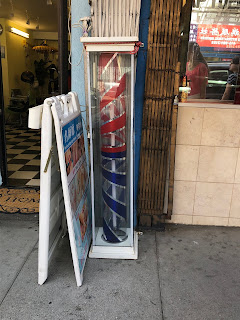After week 7's setback, our research group had to restrategize our data analysis tactic. Instead of using the Degree of change metric with 4 clusters compared to log(Throughput), we chose a method using 2 clusters per window. In a very general sense, the performance of one data transfer could be considered "good" or "bad." We hypothesized that by using two clusters, one cluster would contain normal transfers, the "good" ones, and anomalous points, the "bad" ones. By considering the proportion of "good" points to all the points in one time window, we can make an approximation of what the throughput should be for the window, most notably, if the throughput is abnormally low. We didn't consider a way to identify the normal cluster from the anomalous because we weren't sure how well it would work in the first place. For the sake of time, we bypassed this hurdle by only considering the smaller of the two clusters. Our choice t...



